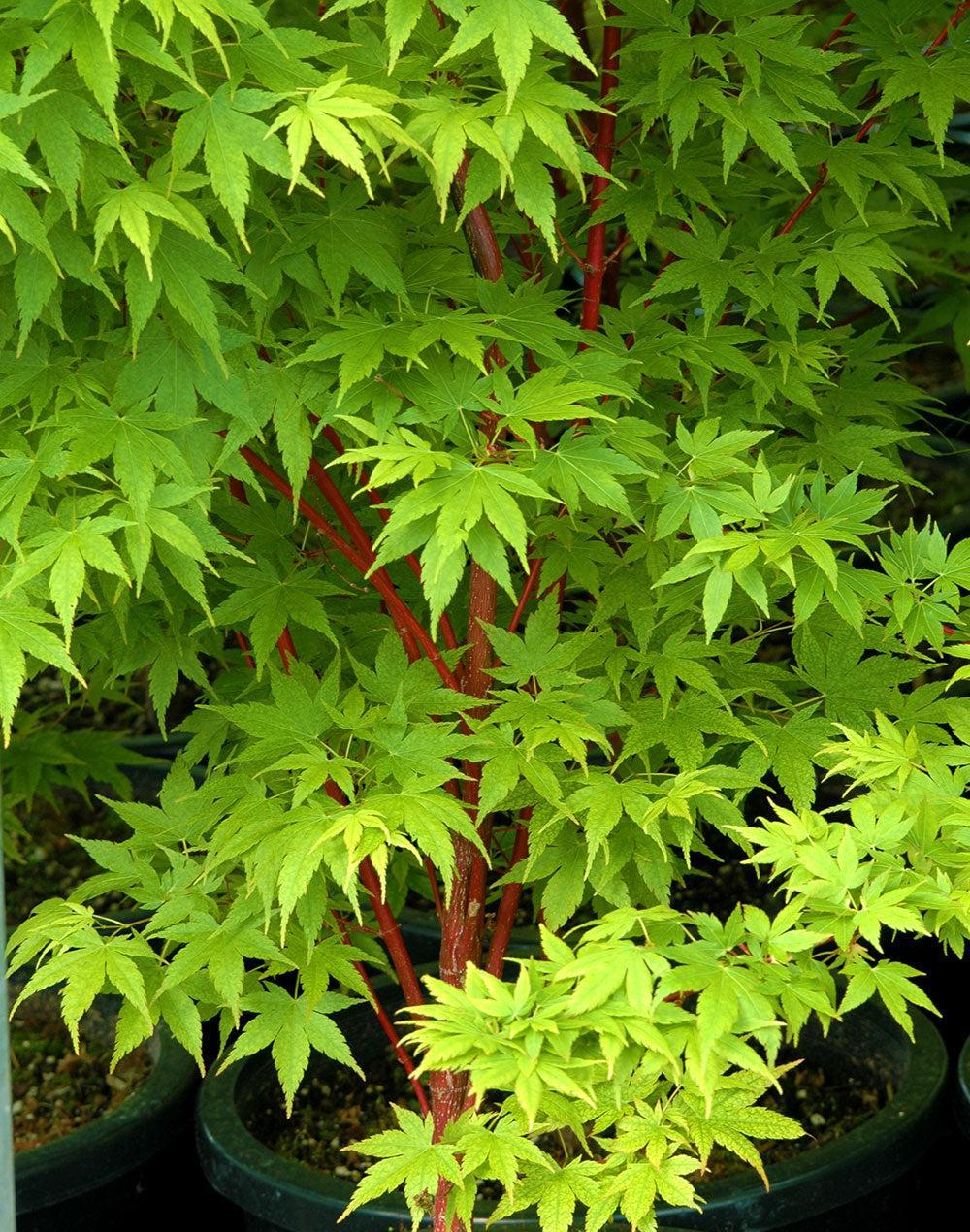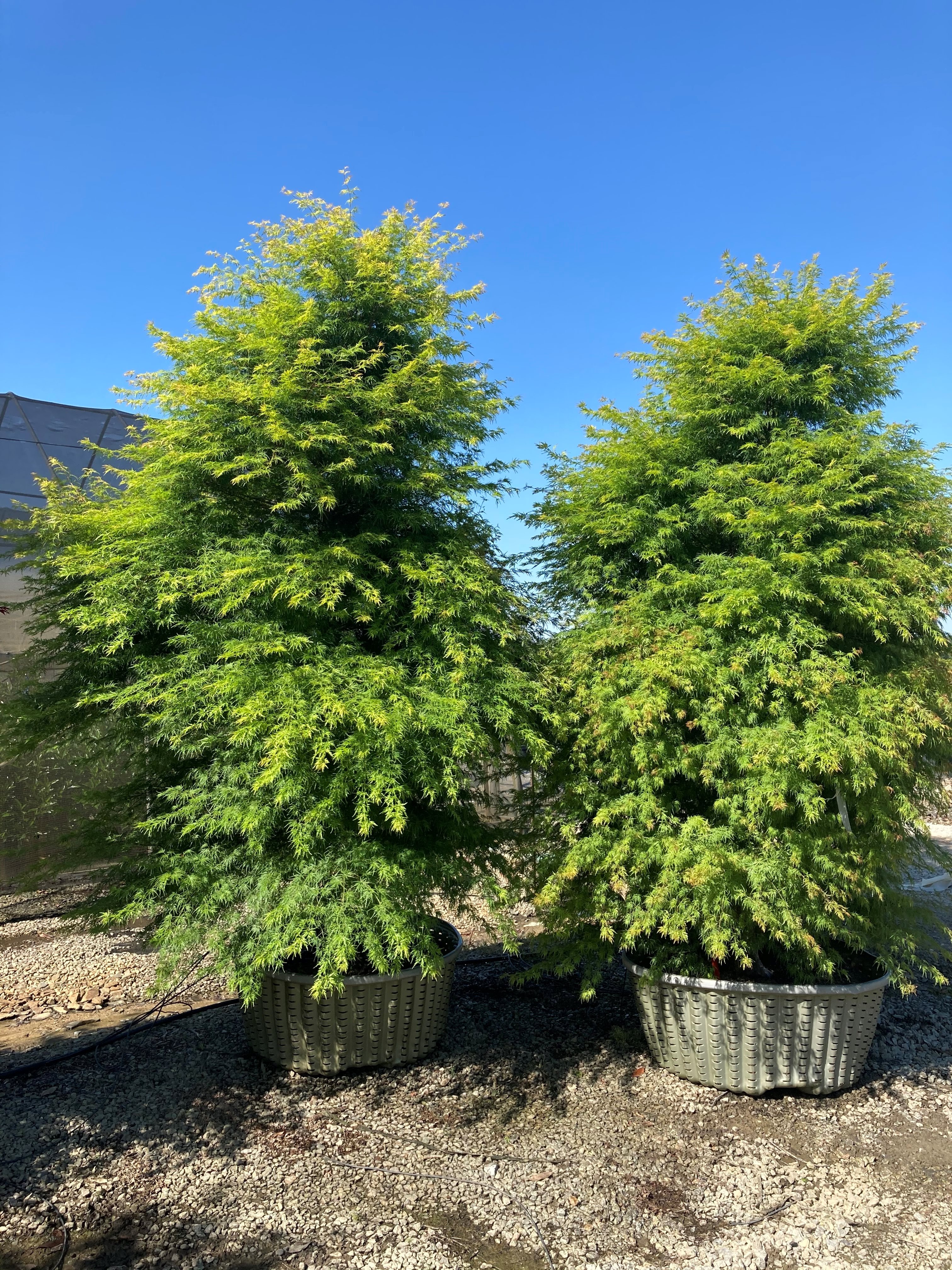919-552-8286
sales@adcocksnursery.com

Grows 15' - 20' ht. & sp.
Native to southeast Korea and central and south Japan where it grows as an understory tree, Bloodgoods are small with a round, broad and upright look. It likes well-drained, slightly acidic soil, and in our part of North Carolina, it does best with a little afternoon shade to prevent leaf tip burn. Leafs out slightly earlier than Emperor I. Provides winter interest with its densely branched form. Its small stature allows it to be planted along walkways and near patios. It can also be used as an understory tree.
Photo Credit: National Gardening Association

Grows 20-25' ht. to 15-20' sp.
Coral bark Japanese Maple is a slow to medium-growing deciduous tree with a vase-like shape. The bright lime-green foliage in spring turns to a creamy yellow-gold in the fall. This cultivar is noted for its coral-red bark which is particularly showy in the fall and winter after the leaves drop. Bark color intensifies in cold weather. Prefers moist well-drained soil, but will tolerate a large range of soil types. Drought tolerant. Winter bark color is best in full sun to modest shade. Excellent specimen or small space tree.
Photo Credit: The JC Raulston Arboretum; National Gardening Association

Grows 15' ht & sp
Emperor I is similar in color, leaf structure, and growth habit to the Bloodgood Japanese Maple. However, it holds its red color better throughout the summer and has a brilliant crimson-red color in the fall. It leafs out later than a Bloodgood thus lessening the chance of frost damage. It makes a great specimen plant, and is perfect for smaller city landscapes, since it provides privacy without getting too big. Prefers slightly acidic and well-drained soil. In our part of North Carolina, a little afternoon shade is recommended and mulch would definitely help.

Grows 10-15' ht with a 6-8' sp
*** COMING SOON *** Seriyu is a green cut-leaf upright Japanese Maple with a vase shape form. Foliage turns to a purple-brown and then to a brilliant red. It makes an excellent patio or garden tree.
Photo Credit: The JC Raulston Arboretum; Wiki Commons;